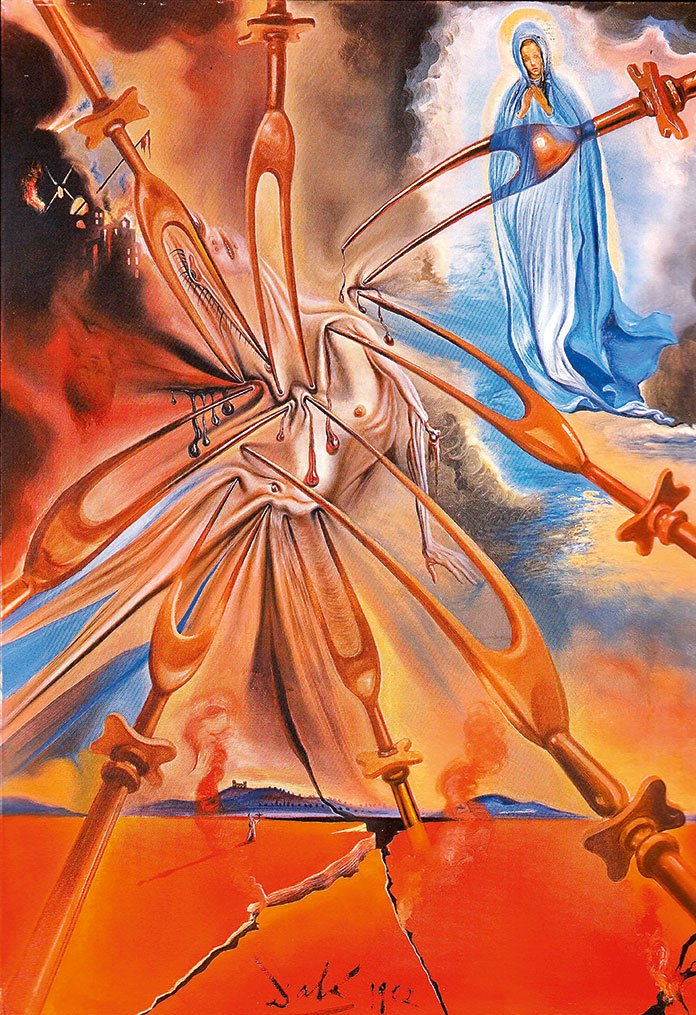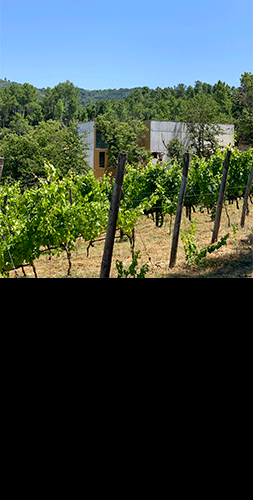
Dalí presents the final painting to father Colgan
When Dalí was welcomed by José Galamba, he was so excited that he told him: «Imagine, the earth opened up right here and the children saw hell». After his meeting with Sister Lúcia, Dalí confessed to Father José. Subsequently he returned to Port Lligat, in Spain, where he painted, in secret, The Vision of Hell. But nobody saw the painting until it was presented to Monsignor Harold Colgan, founder of the Blue Army, and there is an image (image 1) that portrays this moment in which Dalí, wide-eyed, is looking at the priest’s face, who is surprised by what he sees. This was how this painting was received. Few were those who liked the painting at the Sanctuary of Fátima. As the painting didn’t attract much attention, Haffert hung the work in his office in New Jersey, later in the apostolate and after that in the Blue Army in New Jersey, where he placed it under the bed of a nun. There it lay forgotten for almost 30 years, until it was discovered in 1997, and, a few years later, was sold to an art collector. Dalí divided his life between art friends and those he went to church with. This is how it became Dalí’s Greatest Secret.
Only in 2012, when Paul Perry began researching the painting, did the meaning of the work and Dalí’s Secret come to light. As Perry explained when interviewed, which you can read later in this report, «It was surprising to see that so many people were expecting hell to appear an attractive place.» But Perry didn’t just stop there. He started researching on the effect of this work on Dalí and documented, in film, some of the events, through testimonies of people, still living, who knew the artist, while consulting the Blue Army and the archives of John Haffert. The filmmaker used some photos that had been supplied to him, in which you can see Dalí attending church. The result of the painting The Vision of Hell brings us to the image of fear, of hope, of anguish and of mystery. The presence of the Blessed Virgin in the top right corner of the work transmits purity, peace, in the heart of hell. Considered one of the greatest artists of the 20th century, Dalí found God almost by chance.













